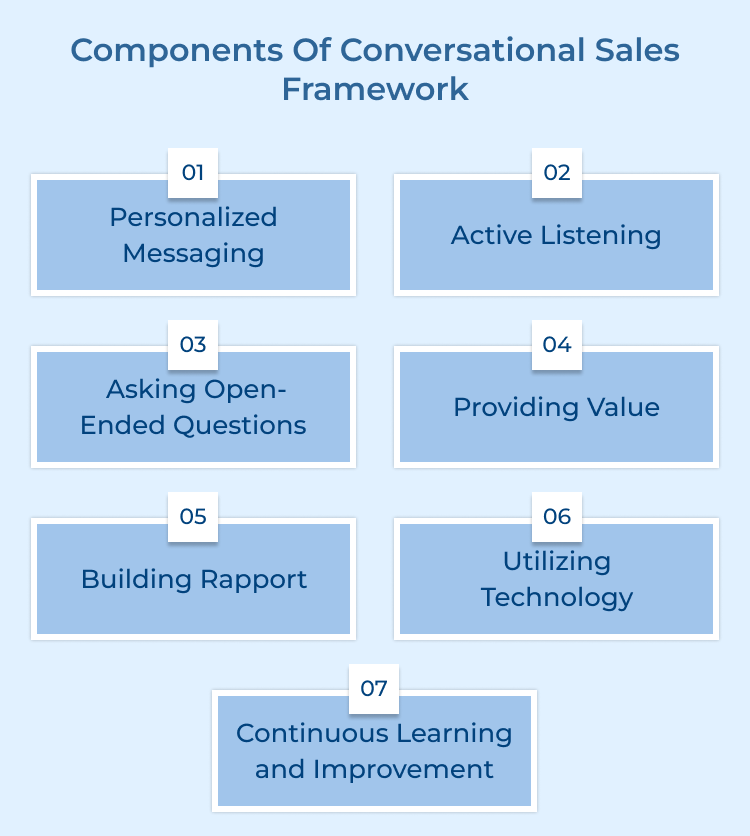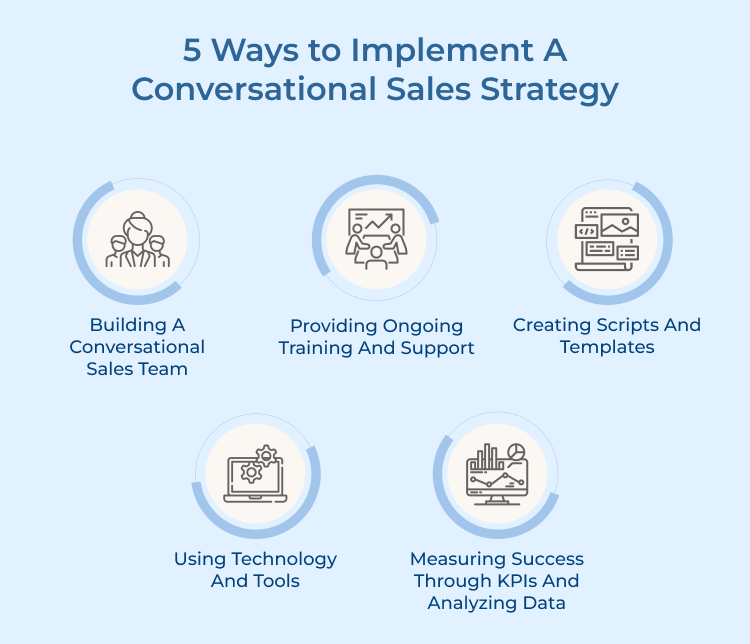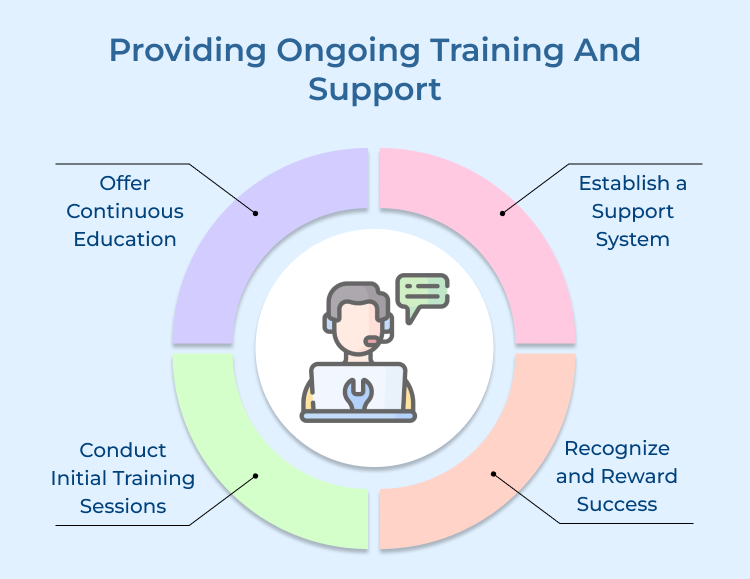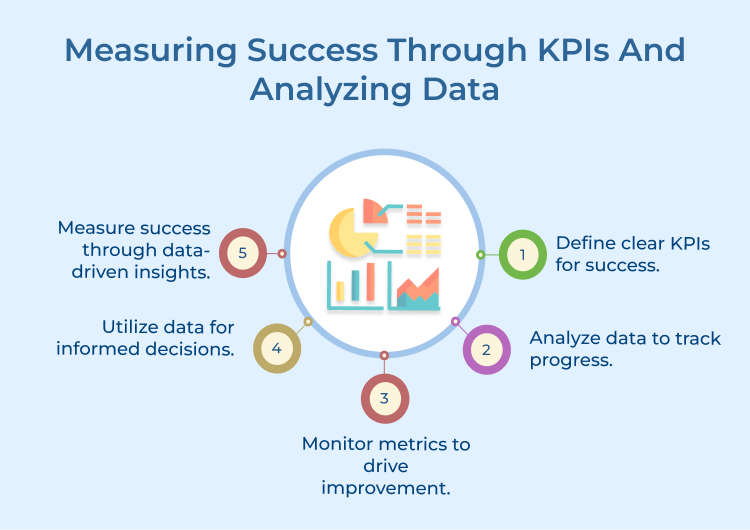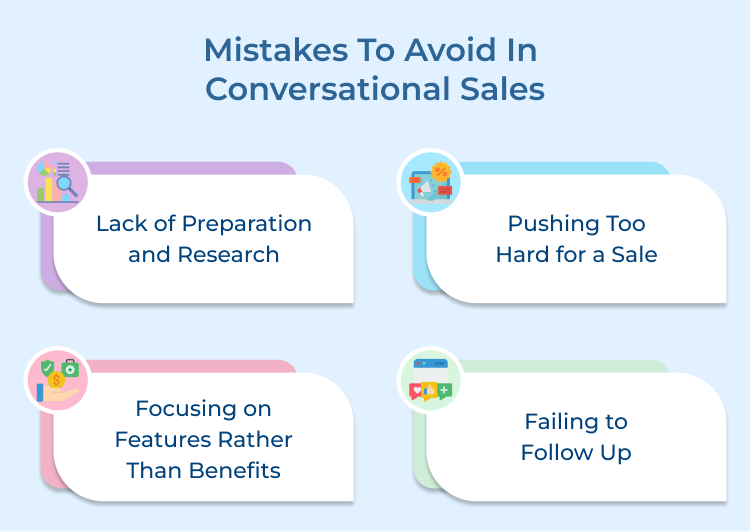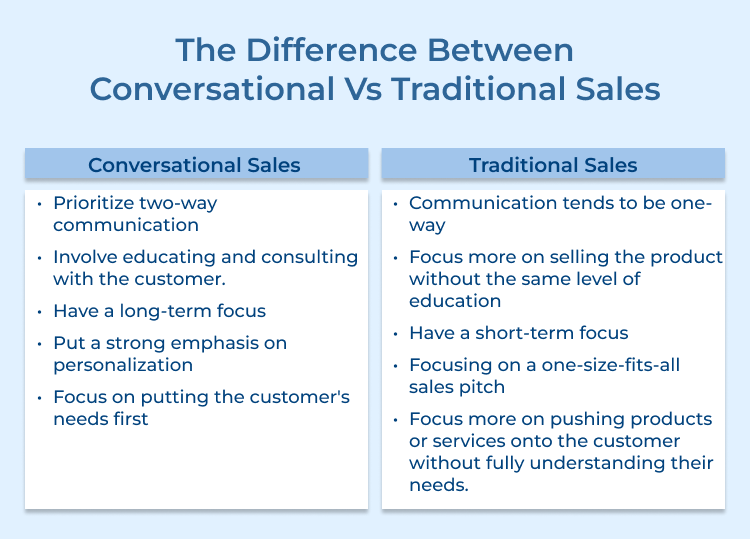1. Personalized Messaging
One of the key components of a conversational sales framework is the ability to deliver personalized messaging to your audience. Mention their full name in their emails, call them during their important events like birthdays or anniversaries. These little things actually add up the trust their customer has towards your brand. Personalization is all about creating impact on your audience that lasts longer.
2. Actively Listen
Didn’t we mention about focusing on listening with attention? That is what active listening is all about. Businesses only tend to listen to the customers with a preconceived notion/solution in the mind. Remember, sometimes all a customer needs is an empathetic ear which can help you churn out an opportunity of your business’s lifetime.
3. Ask Open-Ended Questions
When it’s about customers’ feedback, keep your arms always open (even if their review punches you right in the stomach!). Because, you need as many inputs as possible to gather more information about what customers actually need. An open ended question acts like an open door welcoming the customers into a non-judgmental zone of explaining the things that are going right/wrong with your product. Hear them out and address their objections with pleasure.
4. Providing Value
Everyone loves freebies, even if it is free know-how information. In a conversational sales framework, it is crucial to provide value to your customers throughout the buying process. It can be done by sharing relevant and helpful resources, offering expert advice or providing personalized recommendations. By consistently delivering value, you establish yourself as a trusted advisor, which significantly impacts the customer’s decision-making process.
5. Building Rapport
No business in the entire history of mankind sustained without having a fair relationship with their customers. Observe how, these days, every software tool offers customized approaches to adapt to client’s requirements? As the customers need changes, you need to upgrade yourself and the team to accommodate their evolving requirements. It is all about finding the delicate balance between catering the right product that the customers love while also accommodating their feedback. This is when you build a good rapport with your audience.
6. Utilizing Technology
Technology plays a vital role in implementing a conversational sales framework. By utilizing chat tools such as chatbots, live chat features and CRM systems, businesses enhance their ability to engage with customers in a conversational manner. These tools automate certain aspects of the sales process, streamline communication and provide smart insights into customer behavior as well as preferences.
7. Consistent Learning
A successful conversational sales framework requires a commitment to continuous learning and improvement. It involves analyzing data, monitoring customer interactions and refining your approach based on feedback as well as results. When you are updated with the latest trends from your relevant industry, you refine your conversational sales techniques. This leads to staying ahead of your competition while also delivering exceptional customer experiences.
5 Ways to Implement A Conversational Sales Strategy
The sales conversation has evolved over the years. Mastering these new and improves techniques is not an easy task. We’ve made a list of 5 tips to help you get there!


